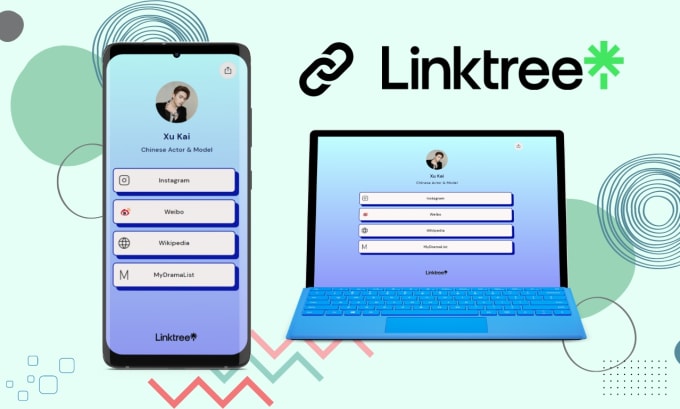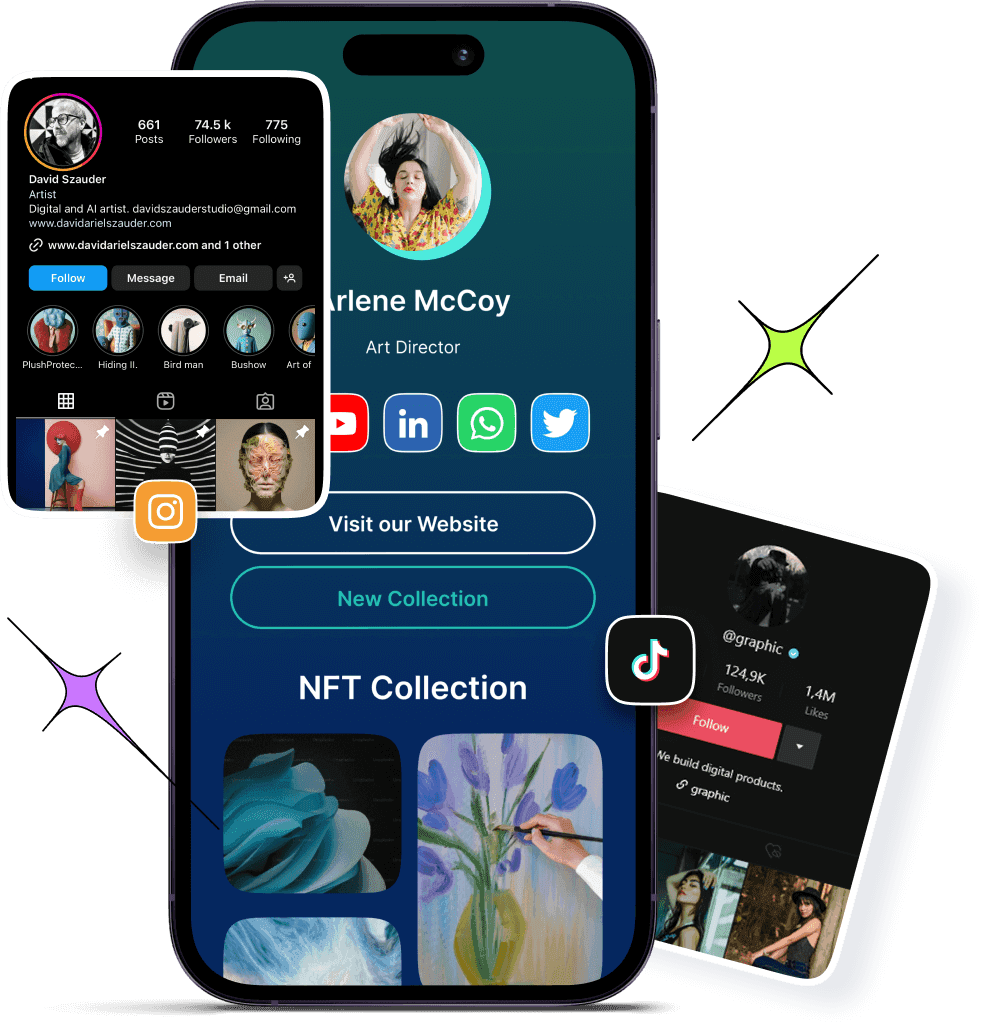
What are Calls to Action and why are they necessary?
Calls to action, commonly known as CTAs, are crucial elements in digital marketing that seek to motivate visitors to take specific actions. These actions can range from clicking on a link, downloading content, registering for an event, or making a purchase. On bios, CTAs play a key role as they guide users to actively engage, converting their curiosity into meaningful interactions.
Effective implementation of calls to action can make a significant difference in the conversion rate of a bio page. According to studies, pages containing well-designed CTAs can experience an increase in conversions of up to 200%. This is because a clear and engaging CTA not only captures the user's attention, but also provides them with direction on what to do next. Without a call to action, visitors may leave a page without knowing what their next step is.
In addition, CTAs not only drive conversions, but also contribute to user engagement. By offering interactive and content-related options, they create a more dynamic and engaging experience. For example, integrating a button that invites the user to "subscribe to our newsletter" or "get more information" encourages greater interest in the brand and strengthens the relationship with the audience. Thus, the use of calls to action becomes essential on any bio page, not only for their ability to improve conversion, but also for their ability to increase visibility and effectively connect with users. Consequently, understanding their importance and applying them correctly is vital to any digital marketing strategy.
The 6 Types of Calls to Action in KVTemplate
In KVTemplate, you can implement six fundamental types of calls to action that help optimize interaction with bio page visitors. Each type serves a specific purpose and can be used in different ways to meet brand communication objectives.
The first type is the contact call-to-action. This allows users to communicate directly with the company through a form or link. Its effectiveness lies in the fact that it establishes an immediate connection and can be used in situations where the aim is to solve doubts or establish commercial relations. For example, a button that says "Contact us" will facilitate this interaction.
Next, we find the survey call to action. This tool invites users to participate in surveys or feedback forms, which can provide valuable information about customer perception. An example of this could be a questionnaire that appears after a purchase, asking for feedback about the product and the shopping experience.
The newsletter call to action is used to incentivize visitors to sign up for a mailing list. This is key to building a customer database and keeping them informed about news and promotions. An example can be a form to subscribe, appearing in a corner of the bio page.
Another type is the call-to-action message, which is often used in chatbots or messaging applications. This type allows users to interact in a more personalized way and get immediate responses to their concerns.
The image call to action uses attractive graphics to capture the user's attention and guide them to a desired action, such as visiting a specific page or exploring products.
Finally, the discount coupon call to action is designed to incentivize purchases through special promotions. An example would be a banner offering an exclusive discount code, which can be especially effective during sales events or product launches.
When selecting the right type of call-to-action, it is essential to consider the target and audience. Understanding who the target audience is and what action you want to promote allows you to maximize the effectiveness of these elements within a bio page.
The Functionality of Calls to Action in biosites
In the context of modern biosite design, calls to action (CTAs) play a crucial role in guiding user behavior. In KVTemplate, each biosite can incorporate a unique call to action, which boosts its relevance and effectiveness. This unique approach allows the CTA to be presented as a prominent element when the user loads the page, immediately transferring their attention to the desired goal. The function of this callout is clear: to guide the user to a specific action, whether it is subscribing to a newsletter, downloading a resource or making a purchase.
Implementing a single CTA on each bio page not only simplifies navigation, but also facilitates a more focused interaction. By not saturating the user with multiple options, it minimizes the possibility of being overwhelmed, which is a determining factor in the conversion rate. In this sense, presenting the CTA as a 'popup' creates an interactive and dynamic experience that captures attention from the first moment. In addition, the strategic design and placement of this element is critical; it must be visually appealing and strategically located on the page to maximize its visibility.
To optimize the effectiveness of a call to action, it is advisable to use clear and persuasive language that resonates with the target audience. Words that convey urgency or immediate benefits can significantly improve click-through rates. It is also valuable to conduct A/B testing to determine which formulations or formats work best, allowing you to continually adjust and refine your marketing strategy. In summary, the uniqueness and prominence of the call to action on KVTemplate bios not only affect aesthetics, but are determinants in digital marketing effectiveness, facilitating the completion of key objectives.
Strategies to Maximize Call to Action Effectiveness.
To increase the effectiveness of calls to action on bios, it is essential to take a multi-faceted approach that includes engaging visual design, persuasive copywriting, and strategic placement of CTAs. First, the design should be eye-catching and in keeping with the aesthetics of the page. Contrasting colors and buttons that are easy to distinguish can help capture the visitor's attention and guide them to the desired action. It is recommended to avoid an excess of distracting elements, making it easier for visitors to focus on the main call to action.
Persuasive copywriting is another crucial aspect. Text accompanying calls to action should be clear, concise and convey a sense of urgency or value. Using energetic action verbs can increase users' motivation to click. For example, instead of "Subscribe," a more persuasive alternative might be "Start your free trial today." Also, testimonials or statistics that support the benefit to be gained by following the call to action are suggested.
The location of CTAs also plays a key role in their effectiveness. It is advisable to place them at strategic points where users tend to fix their attention, such as at the top of the page and at the end of the content. Alternatively, including calls to action in the middle of the content can be beneficial, especially if valuable information has been provided to encourage action. In addition, using analytics tools can help measure the success rate of these elements. Metrics such as click-through rates, conversions and time on page are essential indicators that can guide necessary adjustments.
Finally, implementing KVTemplate can simplify the process of designing and optimizing calls to action, offering comprehensive solutions that allow users to adapt their strategies according to the results obtained.




